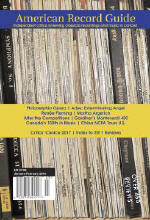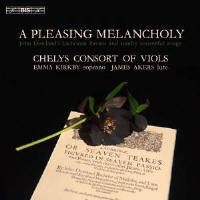Texte paru dans: / Appeared in: |
|
|
Outil de traduction ~ (Très approximatif) |
|
|
Reviewer: William
J. Gatens The
cultivation of melancholy seems to have been fashionable in late 16th and
early 17thCentury England, and no composer is more closely associated with
this fashion than John Dowland (1563-1626). In 1604 he published his
collection Lachrymae or Seven Tears Figured in Seven Passionate Pavans with
a dedi cation to Anne of Denmark, queen consort of James I. He was then
serving as lutenist at the court of Anne’s brother, King Christian IV of
Denmark, where he was highly paid and granted generous travel leave. In his
dedication to the queen he says that tears are not always shed in sorrow,
but sometimes in joy and gladness. Among the many treatises on melancholy of
that period, Robert Burton, in his Anatomy of Melancholy (1621), observes
that “many men are melancholy by hearing music, but it is a pleasing
melancholy” that “expels cares, alters their grieved minds, and easeth it in
an instant”. He makes it sound like having a good cry at a sad movie. In
addition to consort music, the present recording includes songs by Dowland,
Robert Jones, Tobias Hume, John Danyel, and Anthony Holborne. It is
noteworthy that the lyrics never mention the immediate cause of sadness. The
closest we come is penitential regret for unnamed sins in Danyel’s ‘If I
Could Shut the Gate Against my Thoughts’. It is as if naming an adequate
reason for melancholy would spoil the effect. In addition to the seven
Lachrimae Pavans, the 1604 publication contains 14 other consort dances,
each bearing the name of a person. This recording includes just one: ‘M.
George Whitehead his Almand’. Two other dance pieces, a Paduan and Volta,
possibly arranged by Thomas Simpson, come from a 1621 publication from
Hamburg. The nine songs on this program are sung by Emma Kirkby. Now in her
60s, her voice may not have the youthful flavor that helped to make her a
pre-eminent early-music soprano beginning in the 1980s, but it has matured
into something just as beautiful. The tone is still pure, and one can only
marvel at the eloquent expressiveness and flawless projection of phrase in
these performances. About a year ago Laurence Dreyfus and the viol consort
Phantasm with lutenist Elizabeth Kenny issued a recording of the complete
1604 publication (Linn 527; J/F 2017). It is instructive to compare their
performance of the Lachrimae Pavans with this one. It is only fair to say
that, based on the recordings I have heard, Phantasm is my favorite among
currently active viol consorts. Their performances are marked by liveliness
and phrasing that draws the listener into the flow of their playing. This is
true even of music at slow tempo like the Dowland pavans. I do not wish to
reflect unfavorably on the Chelys Consort, whose performances are exquisite
in their own way. They convey a feeling of introspective repose appropriate
to music intended for the delectation of the players; Phantasm gives a
keener sense of forward motion. | |
|
Support us financially by purchasing this disc from eiher one of these
suppliers. Un achat via l'un ou l'autre des fournisseurs proposés contribue à défrayer les coûts d'exploitation |
|
|
|
|
|
Cliquez l'un ou l'autre
bouton pour découvrir bien d'autres critiques de CD |
|




